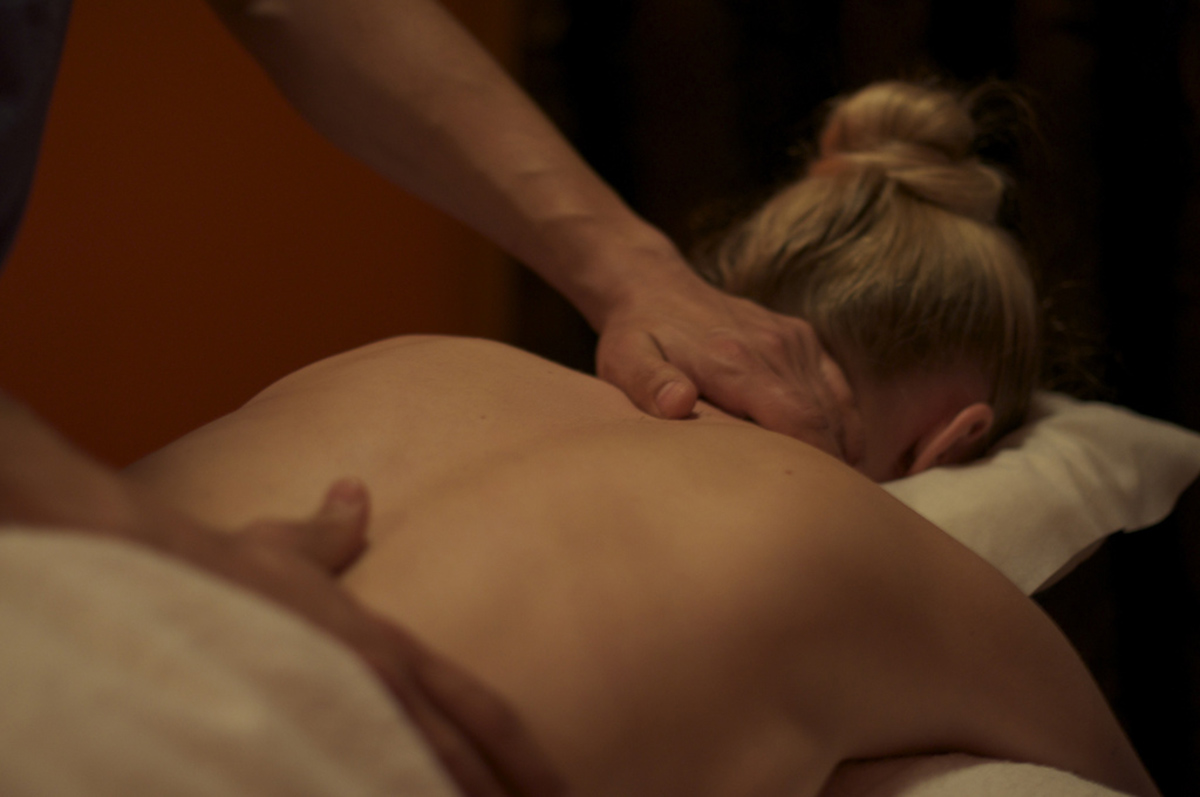Table of Contents
1: Massage
DOMS is a tissue issue, so it makes sense that soft tissue oriented therapies like massage would give you some relief. And the evidence support that. Stretching is pretty much totally ineffective — even for improving flexibility, let alone recovering from DOMS, whether you use it before or after training. But massage is a different story. And it doesn’t have to be massage. Any tissue work will do: foam rolling is also effective. In many cases you can massage yourself, too — DOMS is most likely in the legs anyway, and massaging your own quads is fairly doable. About two hours after training is the ideal time for this.

How does it work? It may work because massage makes you feel better, and feeling better makes pain hurt less. It may also help the body shuttle waste products away from the muscles in question. Without knowing more about what actually causes DOMS it’s hard to say for sure.
2: Compression
Compression devices like elastic bandages or compression sports clothes can help reduce exercise-induced muscle pain. That’s the good news. The bad news is that the more that pain resembles classic DOMS, the less effective compression devices seem to be at controlling it.
How does it work? Potentially by restricting blood flow.
3: Caffeine
Caffeine isn’t just the cure for everything because I happen to like coffee. In a recent study, two groups of trainees were given either caffeine or placebo before training, then did a workout designed to elicit DOMS. The caffeine group had a lower rate of perceived exertion and performed more reps on their final sets: they felt it was easier and they did more. They also recovered faster; by the third day of recovery from a workout specifically designed to cause DOMS their soreness was completely gone. The dose used was 5mg/kg bodyweight for men, and in a similar study women took the same dose post-workout and found DOMS cut by between 24% and 48% depending on the motor patterns being assessed. For most people who aren’t unusually large or small, 5mg/kg bodyweight is a couple of cups of coffee, nothing that’s likely to cause any adverse effects.
How does it work? Caffeine probably works by blocking pain signals to the CNS and boosting neural drive.
4: Branched-Chain Amino Acids
BCAAs are a staple supplement for serious trainees. But they can also reduce DOMS significantly. In a study, untrained men used BCAAs in recovery from a DOMS-inducing workout and both muscle soreness and strength reduction fell significantly. The subjects took BCAAs for seven days before training and for two days afterwards.
How does it work? Alone among the treatments on offer, BCAAs may actually work by directly reducing muscle damage.
READ Muscle Tissue Damage And Home Based Recovery Techniques
5: Antioxidants
Taking antioxidants orally can be an effective way to reduce DOMS. A 1992 study found that taking 1mg of Vitamin C for three days before and seven days after a strenuous workout reduced muscle soreness by up to 44 percent. Vitamin E can reduce signs of muscle damage after exercise but doesn’t seem to have much effect on DOMS. Finally, cucurmin, an antioxidant and anti-inflammatory found in turmeric, has been shown to effective when used topically.
- The effect of caffeine ingestion on delayed onset muscle soreness, Hurley et al http://www.ncbi.nlm.nih.gov/pubmed/24164961
- Branched-chain amino acid supplementation before squat exercise and delayed-onset muscle soreness, Shimomura et al http://www.ncbi.nlm.nih.gov/pubmed/20601741
- Effects of Massage on Delayed-Onset Muscle Soreness, Swelling, and Recovery of Muscle Function, Zainuddin et al http://www.ncbi.nlm.nih.gov/pmc/articles/PMC1250256/
- Treatment and Prevention of Delayed Onset Muscle Soreness, Declan et al http://static1.squarespace.com/static/526c72d0e4b0c72bb55e640b/t/5441cf2ce4b0881390291780/1413599020420/Treatment+and+Prevention+of+Delayed+Onset+Muscle+Soreness.pdf
- Photo courtesy of Aidan Jones via Flickr: www.flickr.com/photos/aidan_jones/3117187373
- Photo courtesy of Aidan Jones via Flickr: www.flickr.com/photos/aidan_jones/3117187373
- Photo courtesy of Nick J Webb via Flickr: www.flickr.com/photos/nickwebb/3968718397


Your thoughts on this